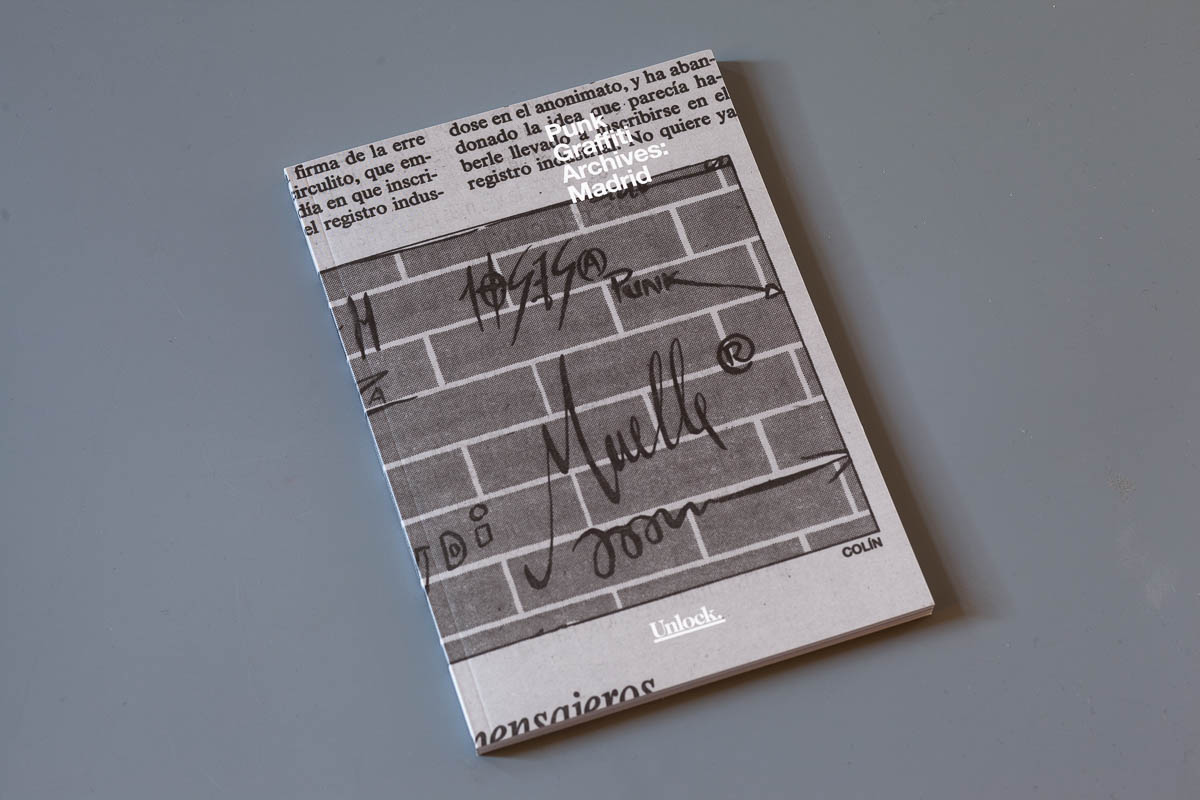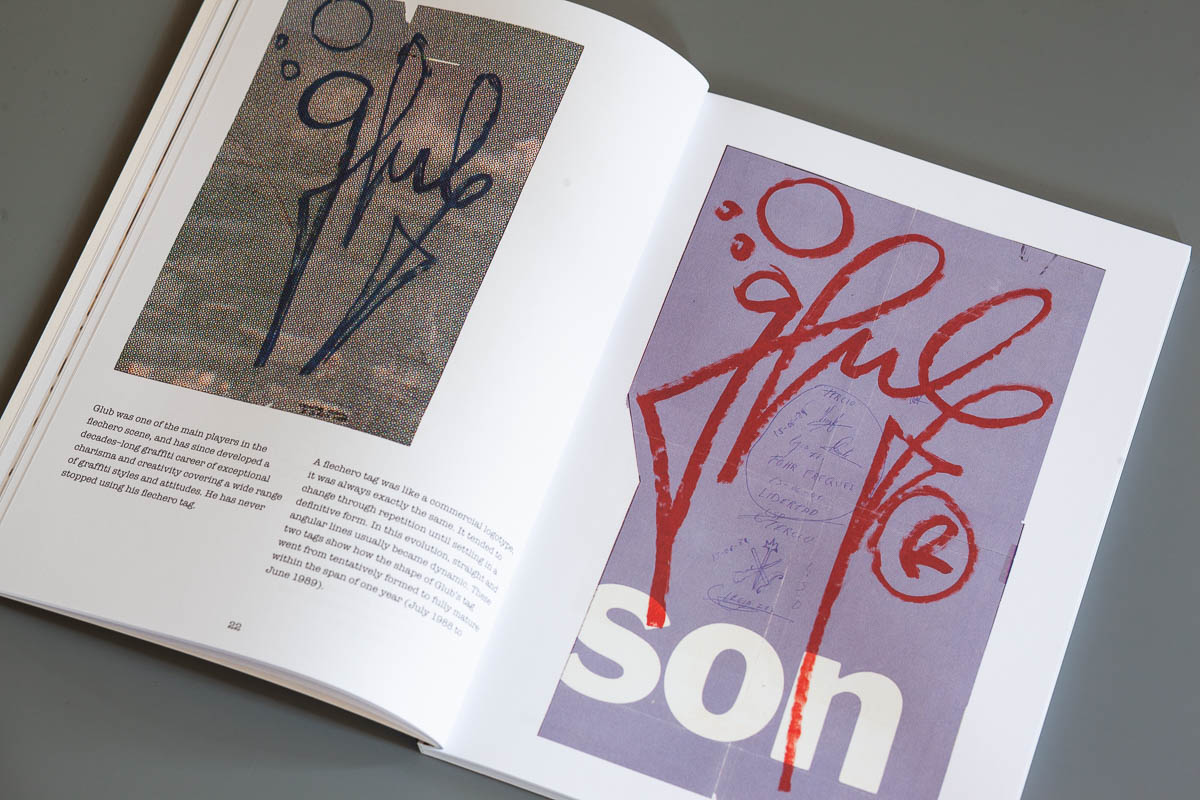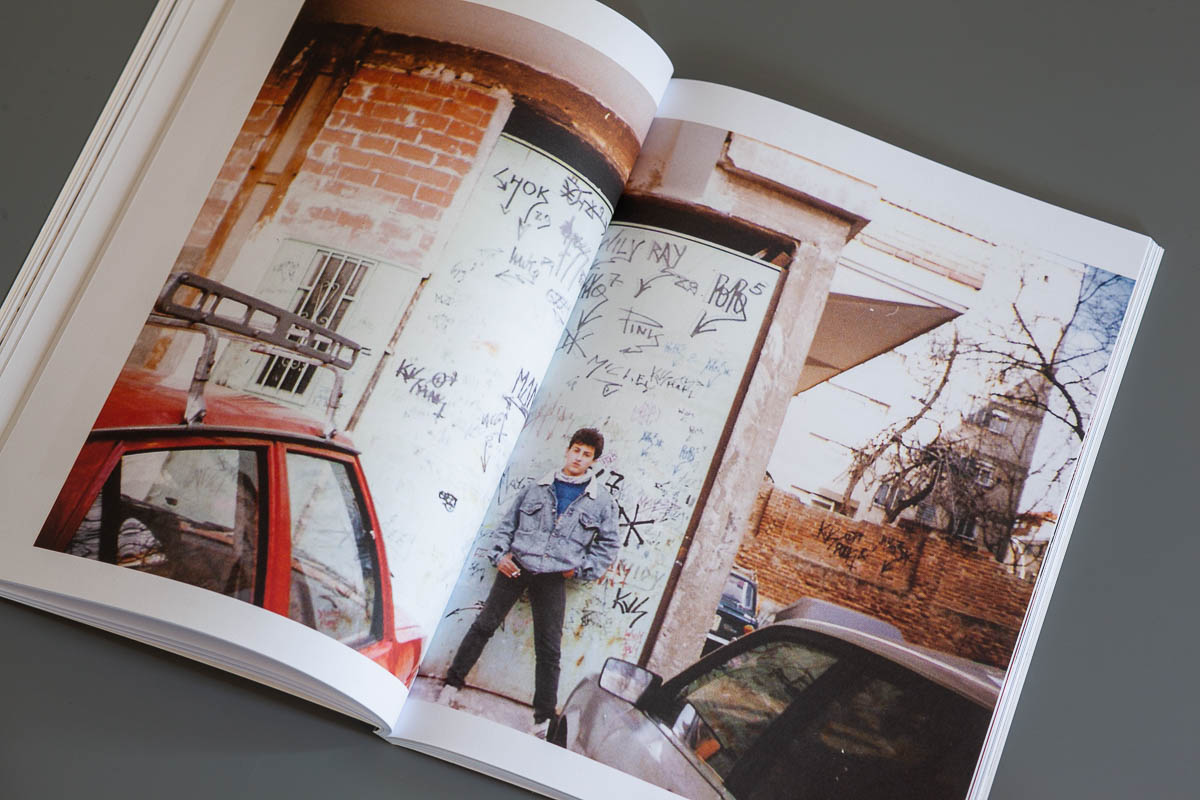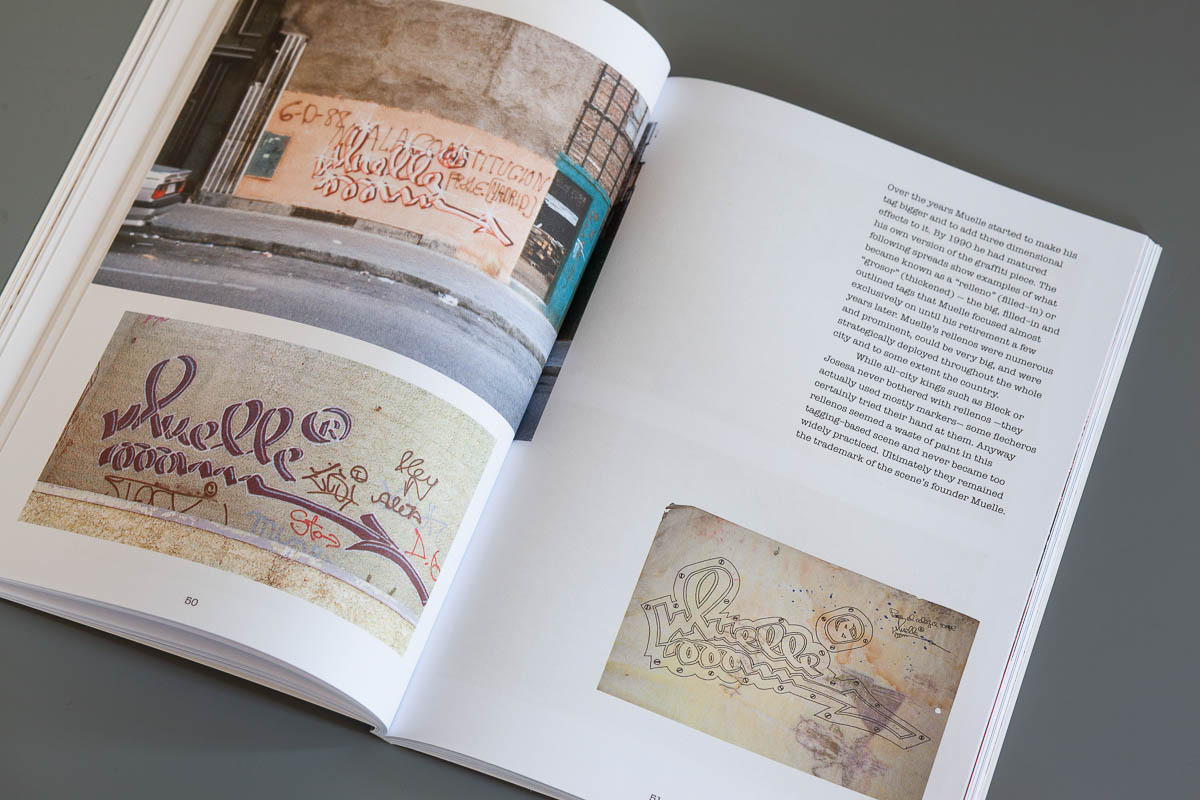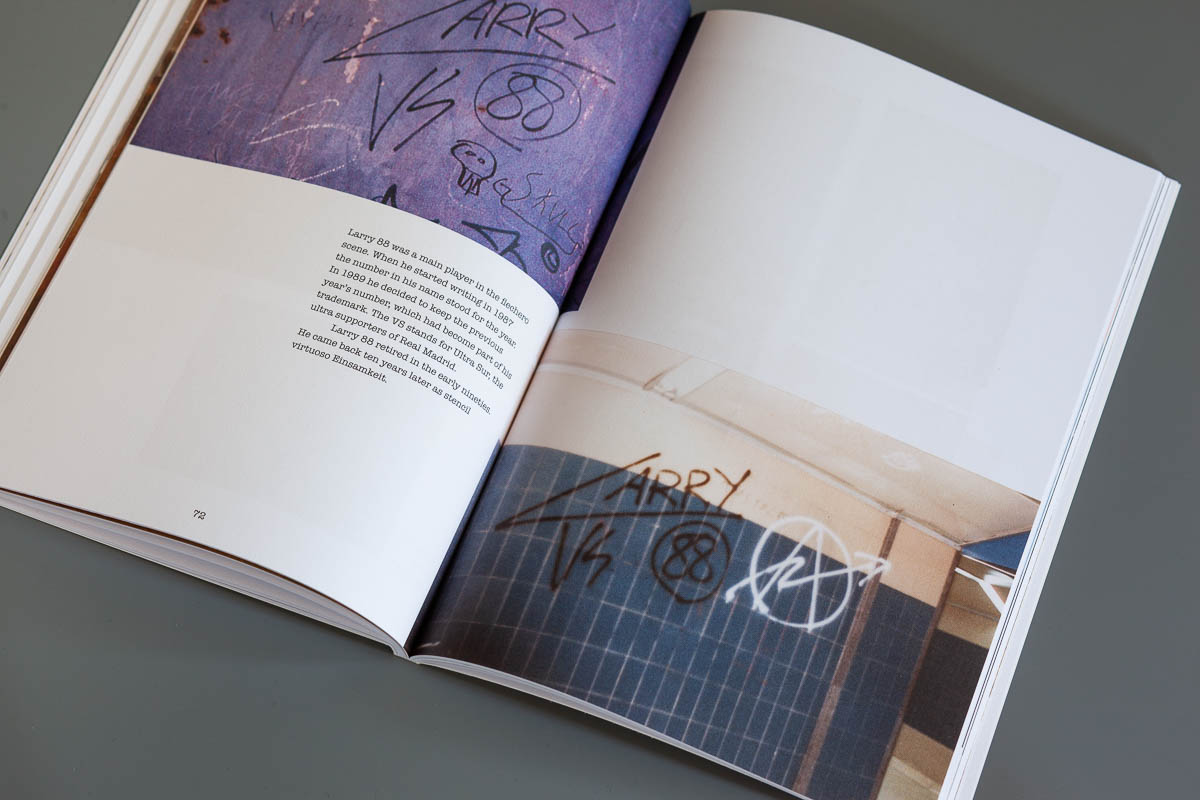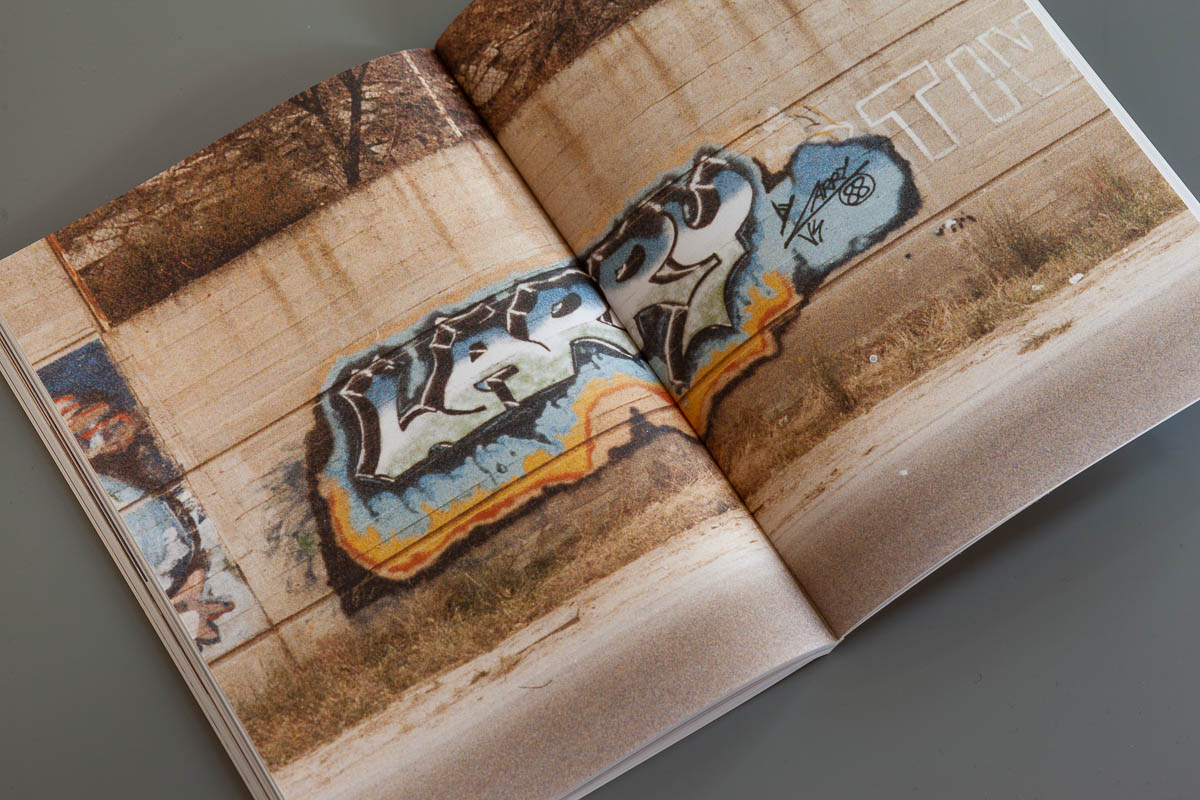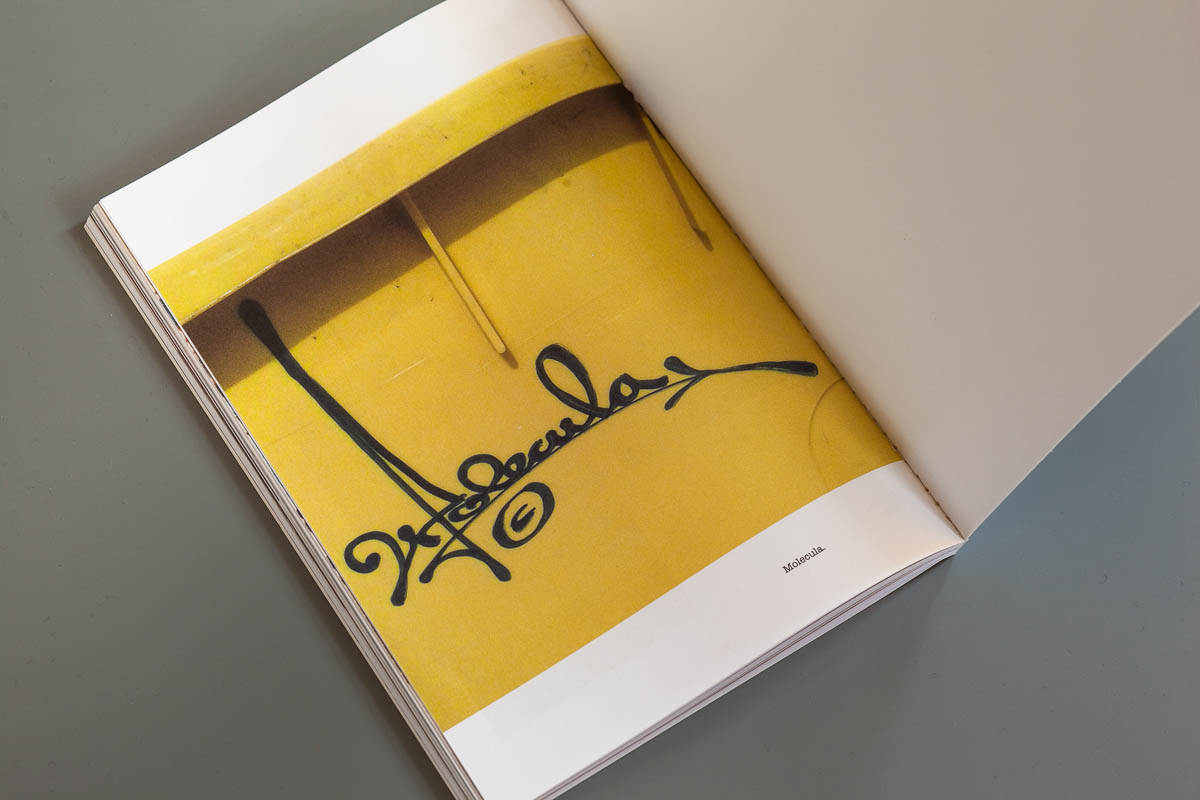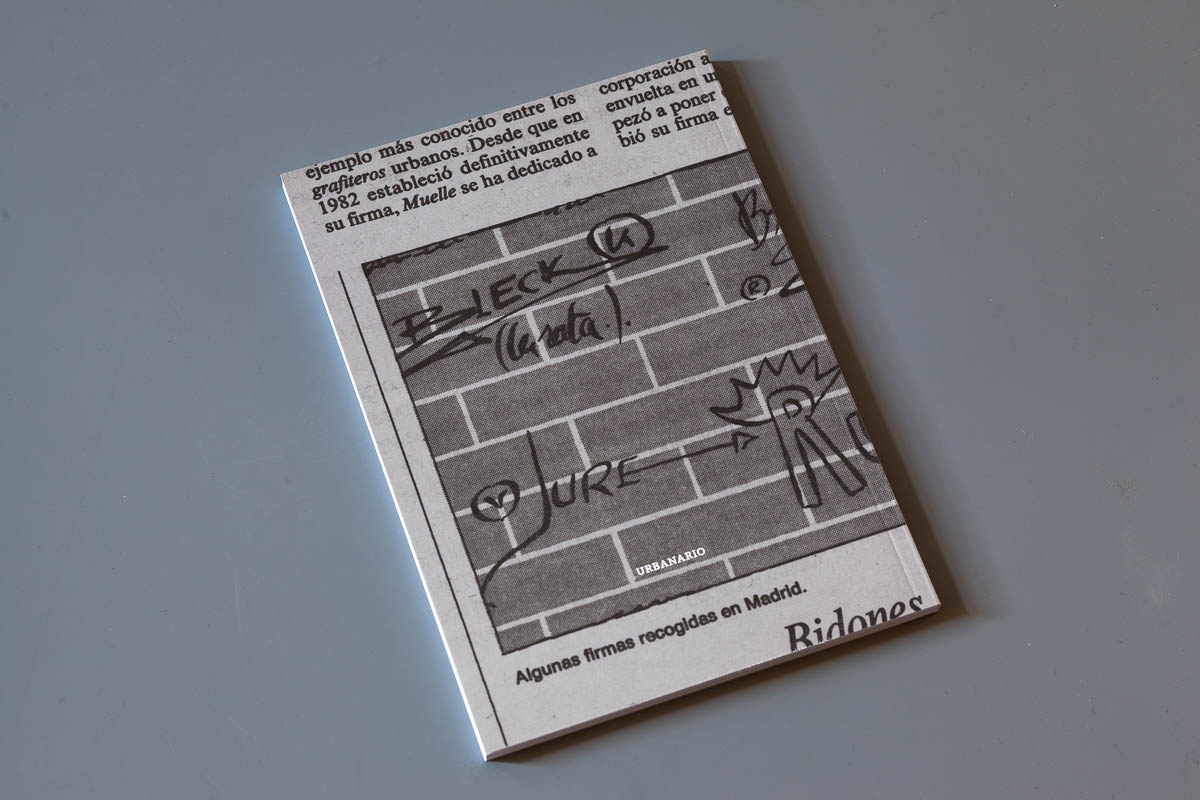Punk Graffiti Archives: Madrid
2018 | 17 × 24 cm | 118 páginas
Punk Graffiti Archives: Madrid documenta la desconocida escena del graffiti ‘flechero’ que invadió las calles de Madrid en la segunda mitad de los ochenta, antes de que la tradición del graffiti neoyorquino se extendiera entre la juventud local.
Punk Graffiti Archives: Madrid incluye numerosas imágenes inéditas de firmas flecheras descubiertas en archivos privados, así como recortes de prensa de la época traducidos al inglés. Es una publicación única que ofrece a los aficionados al graffiti una visión privilegiada de esta poco explorada cultura.
El libro se publicó como parte de la feria editorial Unlock Book Fair de 2018, junto al libro Punk Graffiti Archives: The Netherlands. La feria tuvo lugar en Ámsterdam bajo el tema «punk y graffiti.»
Punk Graffiti Archives: Madrid
17 × 24 cm
116 páginas
Inglés
175 ilustraciones
Color
Tapa blanda
Publicado por Urbanario, Madrid, 2018
Segunda edición: 2019
Dónde comprarlo:
Grant Librería – Miguel Servet 21, Madrid. Librería física y online.
Writers Madrid – Luna 19, Madrid. Librería física y online.
Fort van Sjakoo – Jodenbreestraat 24, Ámsterdam. Librería física, acepta pedidos por correo.
Hitzerot.com, Berlín. Librería online.
De la introducción al libro:
Throughout the decades of 1980 and 1990 the New York tradition of graffiti conquered the whole European continent. But by the early eighties graffiti was nothing new for many urban youth in Europe. Graffiti done by punks was commonplace — slogans, bands’ names and personal nicknames. And punk-originated tagging scenes had developed in some cities with little knowledge of what had been happening in New York.
Two scenes in particular grew to become full-fledged competitions for all-city visibility and reached a notable degree of maturity regarding graphics, methodology and values. One was the Amsterdam scene, started in the late seventies and faded around 1984. The other was the “flechero” graffiti from Madrid, practiced mostly during the second half of the eighties.
Both scenes disappeared when the New York tradition of graffiti became better known through the arrival of books and documentaries. The imported culture was far more complex than the local ones, and in many senses more interesting, so many writers abandoned the local codes and started to explore the game of tags, throw-ups, pieces and trains.

